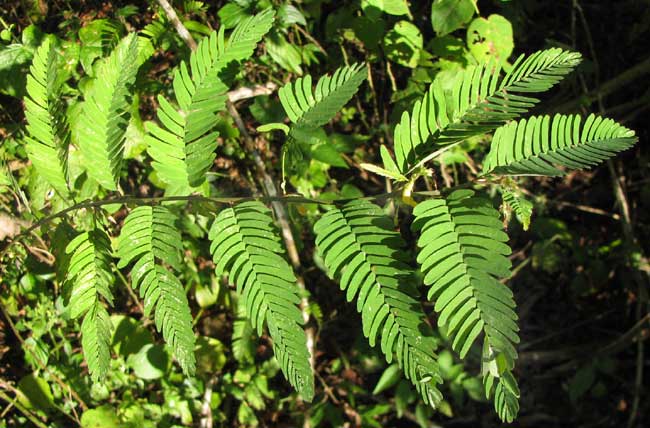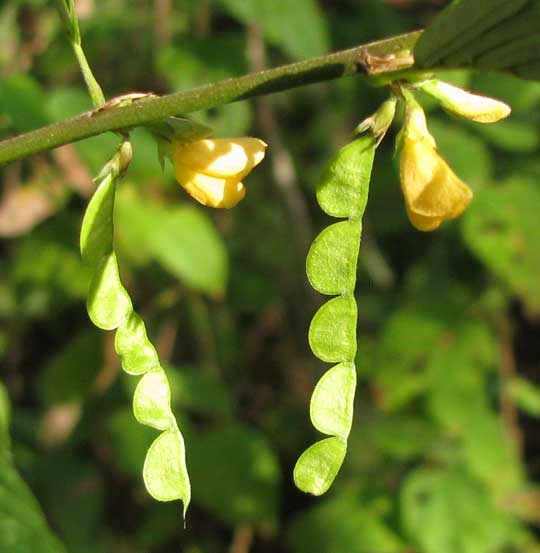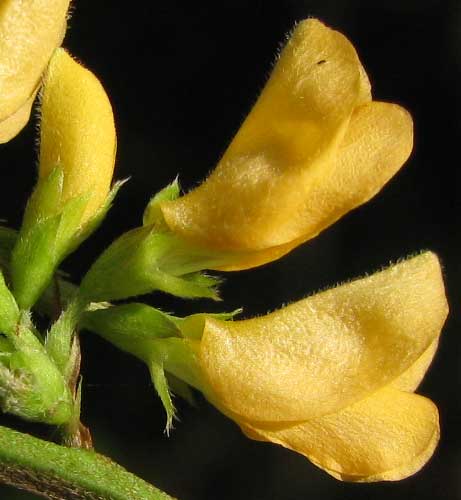Excerpts from Jim Conrad's
Naturalist Newsletter

from the December 12, 2010 Newsletter issued from Hacienda Chichen Resort beside Chichén Itzá Ruins, central Yucatán, MÉXICO; limestone bedrock, elevation ~39m (~128ft), ~N18.52°, ~W95.15°
JOINT-VETCH
Embracing about 730 genera and some 20,000 species, the Bean Family, or Fabaceae, is one of the largest, most diversified of all plant families. Currently down here one of those species now flowering is exhibiting an unusual combination of features. You can see it above.
That's a joint-vetch, a member of the genus Aeschynomene. In the above picture small clusters of flowers and fruits obscurely dangle from the slender stem as it arches horizontally about knee-high over the forest floor. The flower clusters are attached at the compound leaves' petiole bases. There are joint-vetches up North, but this is a different species. I can't confirm the species ID from images on the Internet, but word descriptions lead me to believe that it's AESCHYNOMENE FASCICULARIS, distinguished from others of the genus by its completely yellow flowers.
One curious feature about joint-vetches is that while their feathery, pinnately compound leaves bring to mind mimosas, acacias, sennas and the like, their fruits look like "stick-tights" of the weedy genus Desmodium, plants which usually bear just three leaflets. Also, Desmodium legumes are covered by hooked hairs that enable the fruits to "stick tight" to fuzzy things, while the fruits of Aeschynomene fascicularis are hairless, as shown below:

A close-up of some flowers showing typical features of "papilionaceous flowers" of the Bean Family -- a big upper petal called the "banner" or "standard, two side petals called "wings" and two lower petals fused along their common margin to form a boat-like "keel" -- is shown below:
